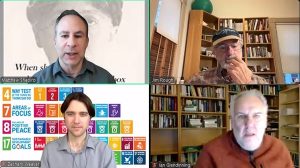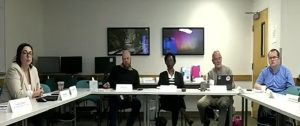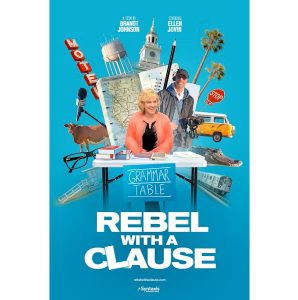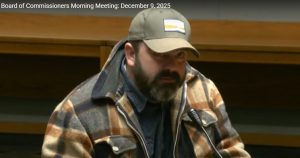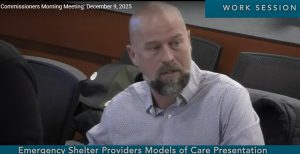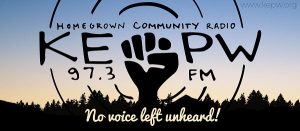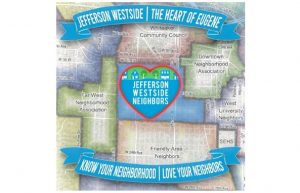Submit NW Forest Plan comments by March 17
8 min read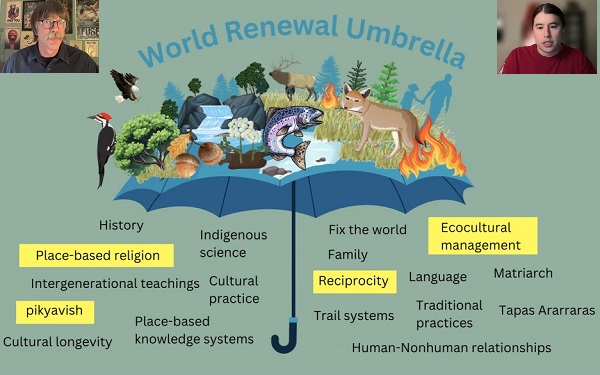
Presenter: You’re encouraged to share your comments on proposed changes to the Northwest Forest Plan. The comment period ends March 17. From Firefighters United for Safety, Ethics, and the Environment (FUSEE), here’s Tim Ingalsbee:
Tim Ingalsbee (FUSEE): I strongly urge people to take action, write a meaningful comment, promote tribal inclusion and fire inclusion—the two are intertwined in our book…
[00:00:24] This mandated fire exclusion, mandated fire suppression in the existing Northwest Forest Plan must be changed. Native fires were a very important ignition source that helped maintain a landscape mosaic of a diversity of habitats that provided a diversity of species, and really, as well, enabled the ecosystem to be resilient to natural changes, natural climate variabilities.
[00:00:54] Many of the old growth forests that we cherish were an outcome of Indigenous land stewardship. The use of fire had many objectives of which one outcome was big old trees were able to survive natural climate variability and changes in fire and precipitation regimes and etc. So the restoration of Indigenous fire stewardship practice is absolutely needed.
[00:01:22] Presenter: FUSEE sponsored a webinar Feb. 13 which included a member of the Northwest Forest Plan’s Federal Advisory Committee (FAC). To emphasize the importance of tribal inclusion, Ryan Reed:
[00:01:35] Ryan Reed (Northwest Forest Plan, Federal Advisory Committee): My name is Ryan Reed. I’m Karuk Hupa Yurok from Northern California. Northwest Forest Plan directly impacts my ancestral territory and homeland itself, right? And I think that’s one of the largest reasons why I applied to be a federal advisory member, in addition to the different perspectives and background I have.
[00:01:53] I’m a co-founder and program director of FireGeneration Collaborative. My support system there really encouraged me to be a part of this, to be in it, not only as an example, but also talk about how younger people need to be involved in decision-making, especially this one.
[00:02:07] In addition, you know, I’ve had a number of seasons as a firefighter, and also identify as a Karuk medicine person and Indigenous fire practitioner. So there’s a number of different perspectives that I bring into this space with me. And that was kind of our objective as a federal advisory committee member is to bring in our constituencies to bring in our communities to be able to help inform the process.
[00:02:28] I’m here to talk about tribal sovereignty in very broad terms, right? And I think it’s important for everyone to understand that tribal sovereignty is a complex set of issues because of the complicated history, as well as diversity within tribes themselves, right?
[00:02:44] And so, especially when you’re thinking about communities across state lines and different histories within the federal government and different designations of tribal entities, whether it’s federal recognition, treaty tribes, non-treaty tribes, state or unfederally recognized tribes, right? There’s complex elements within it and it varies from place to place.
[00:03:04] Keeping that in mind, there’s a lot that I won’t be able to cover, as well as there’s more, probably more responsibility that I’m going to give to you for you to inquire and learn on your own, right? And I think that’s really important when it comes to trying to unpack the various tribal planning components within the Northwest Forest Plan, what we created as a Federal Advisory Committee, etc.
[00:03:24] Before we jump into the Northwest Forest Plan and what tribal sovereignty is, I want to give a quick important history lesson, if you will, right? This is what I was taught as a child, not in the education system, not in the classroom, but within my own living room, if you will.
[00:03:38] And one thing is the importance and role that we have, that we claim as Indigenous people, as having an inherent responsibility to the landscape, not an inherent right, but inherent responsibility to take care of the land and that sense of reciprocity, right? What do we need to do in order for us to co-exist with the animals and the landscape itself?
[00:03:56] And so these are very important concepts to bring into what it means to be Indigenous, what it means to have this fundamental framework of how do we approach our culture, our lifestyle, and so on and so forth. And so, as I kind of talk about these things, again, we have this role and responsibility to the landscape.
[00:04:14] And I come from a land-based religion, meaning that anything and everything when it pertains to my culture or to my religion cannot be practiced or operated anywhere else in the world, right? And so that’s a strong fundamental characteristic of what Indigeneity is, right?
[00:04:29] And so in other words, if there’s impacts to the landscape, if there’s elements that are changing within our landscapes, that directly has an impact on Indigenous people, right? So we’re inherently a frontline community when it comes to impacts of mismanagement, to climatic events, etc.
[00:04:44] And so there’s an importance, a direct correlation of why Indigenous people need to have not only a say at the table, but also have a direct impact and leadership to the different management in which we do.
[00:04:56] At the original Northwest Forest Plan, tribes were not involved in the process. And that’s kind of been a unfathomable understanding of what that means, right? Of not being able to have influence over the original Northwest Forest Plan has profound impacts. Thirty years. For 30 years, right?
[00:05:13] And so I think it’s important of what that looks like, right? What does not having a say at the table or having influence over concepts of management that’s as robust as the Northwest Forest Plan has. And so you’ve got U.S. Forest Service logging, the detriment, the extraction that occurred within my land, and what that remains even a century after it happened; hydraulic mining; a century of fire suppression and the impacts of that, right?
[00:05:39] And this term right here is really important for people to unpack, of ‘eco/cultural genocide.’ The dependency that we have on a landscape is so profound, so dependent in a sense of reciprocity is that when those are directly impacted so are we as a community. And what I’m trying to say is there is no separation from the issues on the landscape from our communities in itself.
[00:06:00] There is a profound and fundamental settler colonial impact that has impacted my people from being able to manage and steward the landscape as we have always done prior to European contact, right? There is a strong colonial history and it continues today of the impacts of how tribes and tribal communities have to endure in order just to be able to take care of the landscape that we’ve always done.
[00:06:23] And I want to be very clear here. It’s not entirely in the hands of the U.S. Forest Service, right? I think there’s so many different aspects that are due responsibility that are necessary to be understood in order to understand tribal sovereignty.
[00:06:36] These colonial barriers have immense impacts in different ways to the community itself. A huge impact to this is understanding the health and well-being of the communities as well as that sense of cultural value and leadership that is being stripped and pulled away from us as communities.
[00:06:54] And so we always think about what we would do in an apocalypse. But Indigenous people have lived through an apocalypse before. And this continuous erasure that we have to endure is a really important fundamental aspect that we’re actively seeing in the Northwest Forest Plan by not being included in the first place.
[00:07:12] It only intensifies when we have these climatic change effects and how the frontline communities continuously always have to take that extra step to identify and also provide solutions, and oftentimes not heard at the same time.
[00:07:26] How are we able to operate the self-sustaining of our cultural values, our practices, as well as our identities with these very fundamental set of colonial concepts that are ingrained within how we perceive the landscape as well as the policies that are in place to prohibit those practices exactly.
[00:07:44] And so the John Muirs, the Gifford Pinchots, these environmentalists who fundamentally want to separate people from the landscape itself also has a profound impact, just as much as we extract or commodify the landscape itself.
[00:08:01] And so there’s many different ways in which I would classify as white supremacy and colonial or Indigenous erasure operate. And it’s not just one, it’s not housed in certain areas, but there’s different ways in which Indigenous communities have to endure.
[00:08:14] Back to kind of where I come into this, of advancing tribal sovereignty in the Northwest Forest Plan. One of the roles in which we tried to do on the FAC (Federal Advisory Committee) is trying to redistribute power that is already existing. The trust responsibilities and the obligations that the U.S. Forest Service has to tribal entities is something that has been long forgotten, misunderstood, or not even acknowledged in the sense that has prohibited tribes from making meaningful impacts on landscapes.
[00:08:39] And so basically what we’ve seen over time is that the Northwest Forest Plan has had created this ‘no action’ approach of not reintroducing fire at the pace and scale that the landscape has historically experienced; depending solely on Western science as the best available science and erasing Indigenous knowledge entirely by not citing or utilizing that entirely, which is a new shift through the 2012 planning rule is to identify and use Indigenous knowledge as the best available science.
[00:09:08] And one impact that I personally have had to do as a Federal Advisory Committee in these spaces was to combat Indigenous erasure, right? And even defining old growth as a concept is actually a colonial and settler European ideology.
[00:09:24] And I say this is because when it comes to Indigenous practitionership and approaching the landscape and a holistic approach, old growth was never an objective. It was actually a byproduct of the use of fire, the use of management that Indigenous people have had over a long period of time, as I would classify as geological time, so hundreds of thousands of years of trial and error of effort and reciprocity and connection to landscape is what shaped these forests that we’re trying to hold onto, right?
[00:09:50] Out of the federal advisory committee, we had 192 consensus-built recommendations, which is I think unheard of, and 113 were focused on tribal inclusion recommendations.
[00:10:00] So this change and trajectory of emphasizing and centering Indigenous leadership and practices is really a fundamental aspect that we led and are continuing to build momentum around.
[00:10:12] To close: Enhancing tribal sovereignty, leadership and practices in this process doesn’t only enhance tribal sovereignty across the board in different areas, external of the Northwest Forest Plan, but it actually facilitates a route and trajectory to healing, to a cultural identity, to being able to practice your own religion in a way without being prohibited, right? And I think that’s a really important takeaway of why there’s significant stake, why there’s significant support around the tribal recommendation itself.
[00:10:45] Presenter: That’s Ryan Reed from the Northwest Forest Plan’s Federal Advisory Committee, speaking at a webinar Feb. 13. There’s one month left to offer comment on the Northwest Forest Plan; comments are due March 17. For more information, see fusee.org.
See also:
